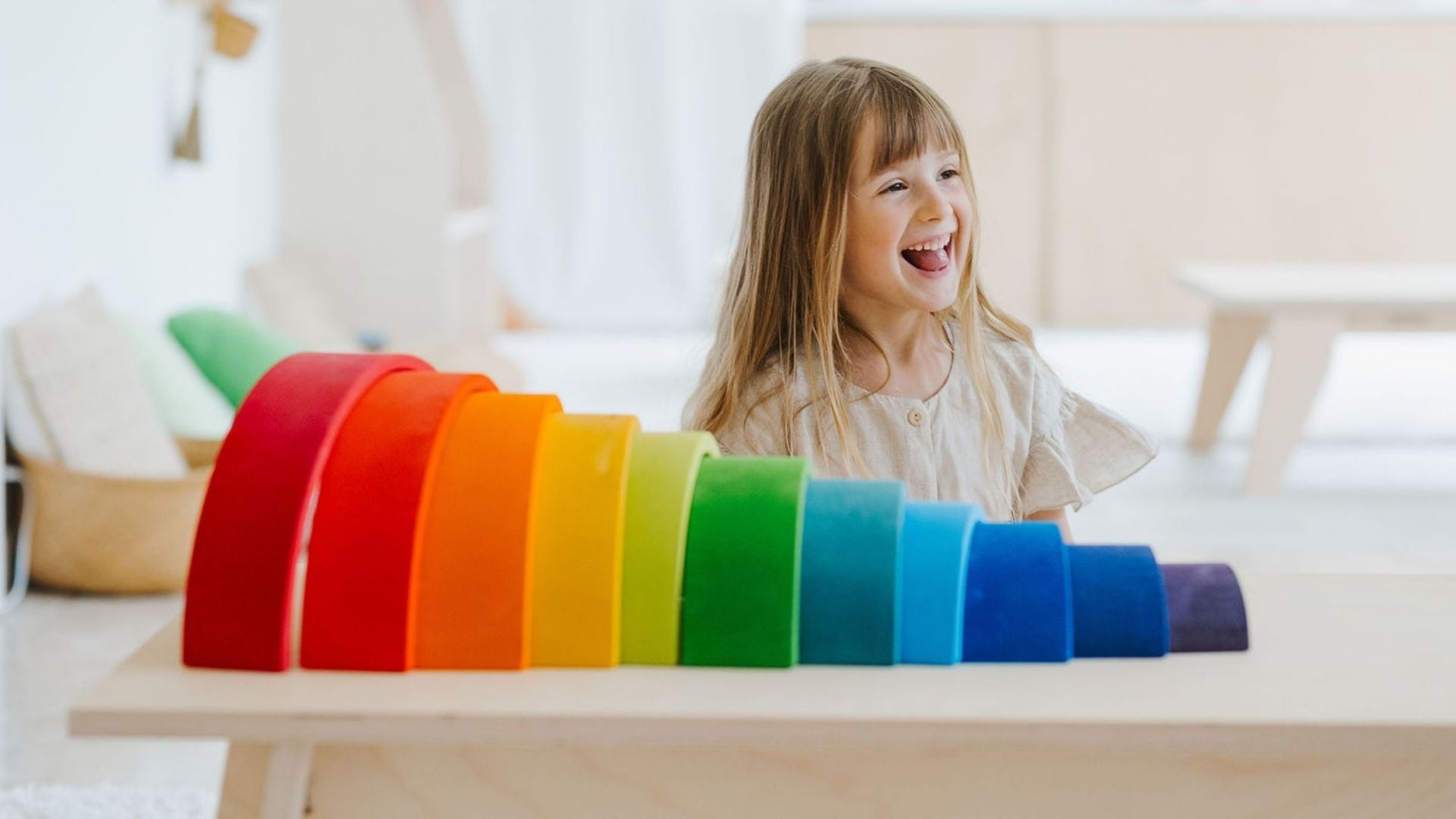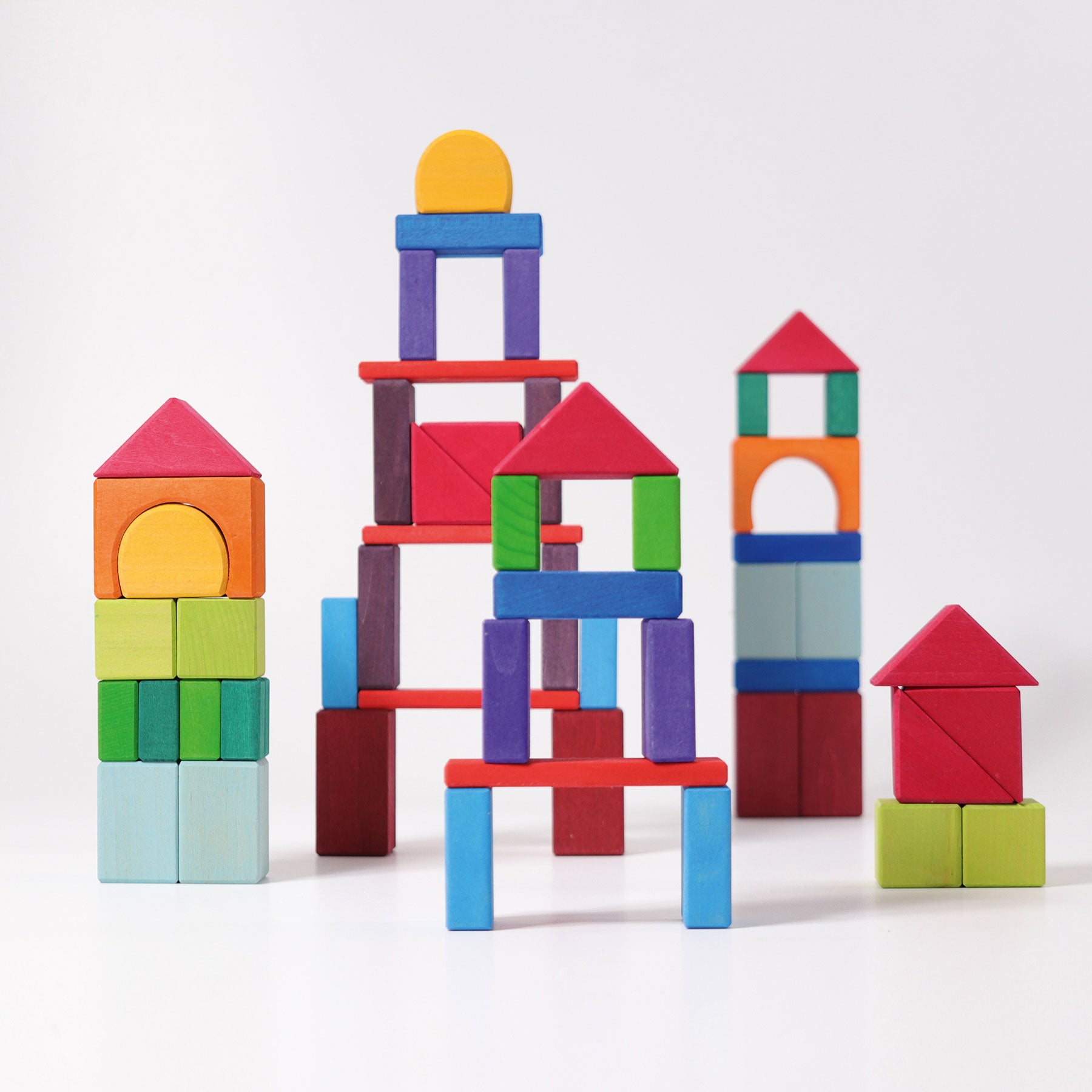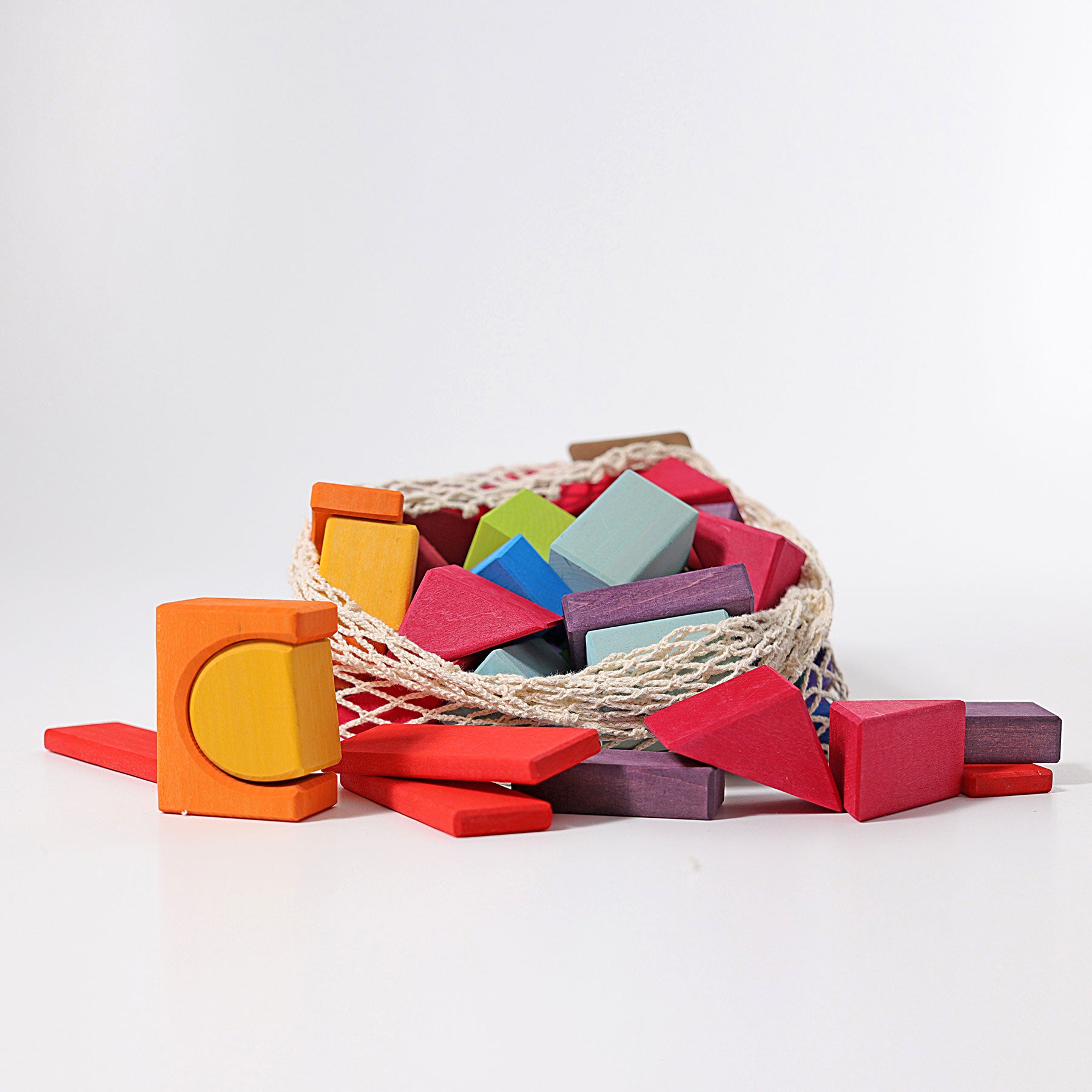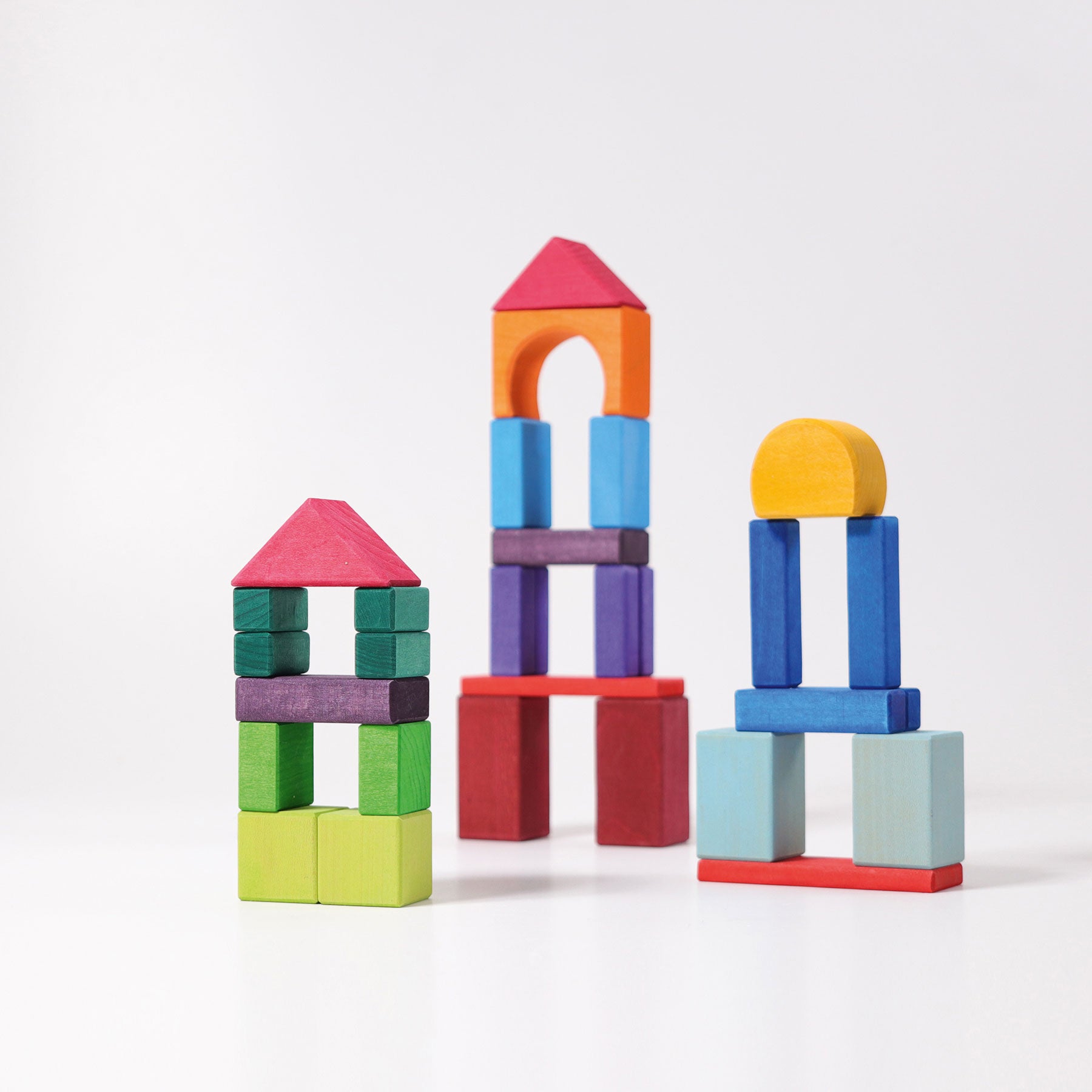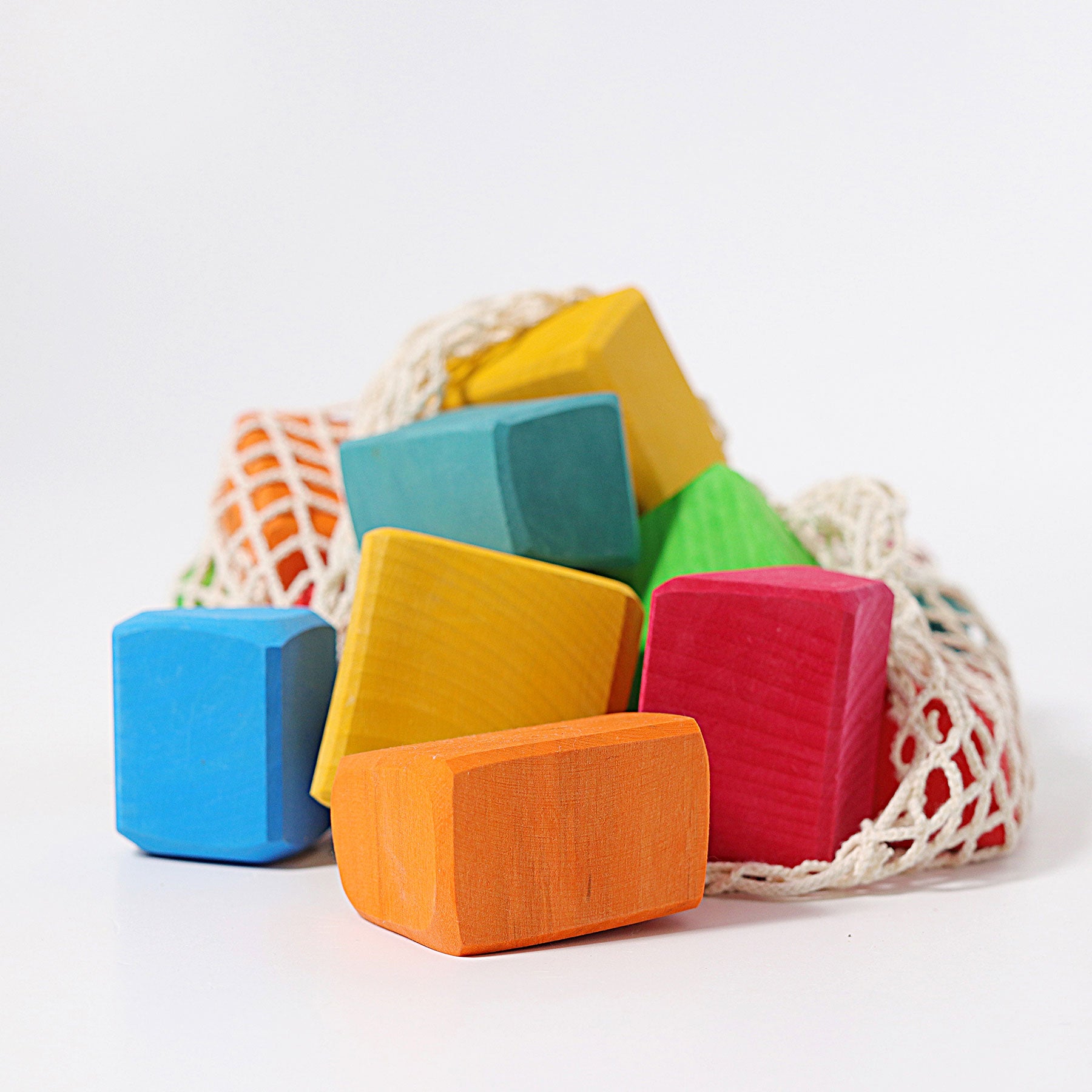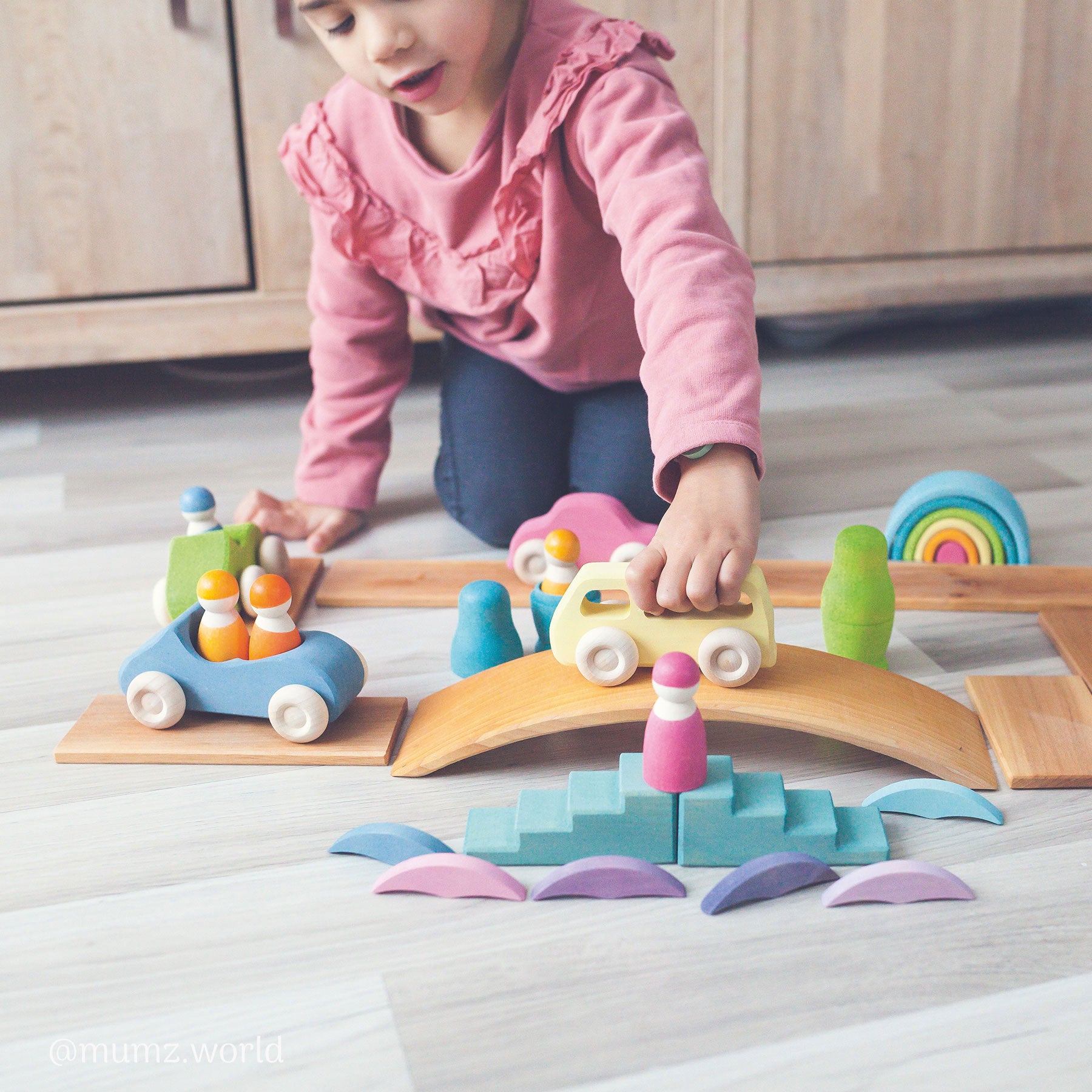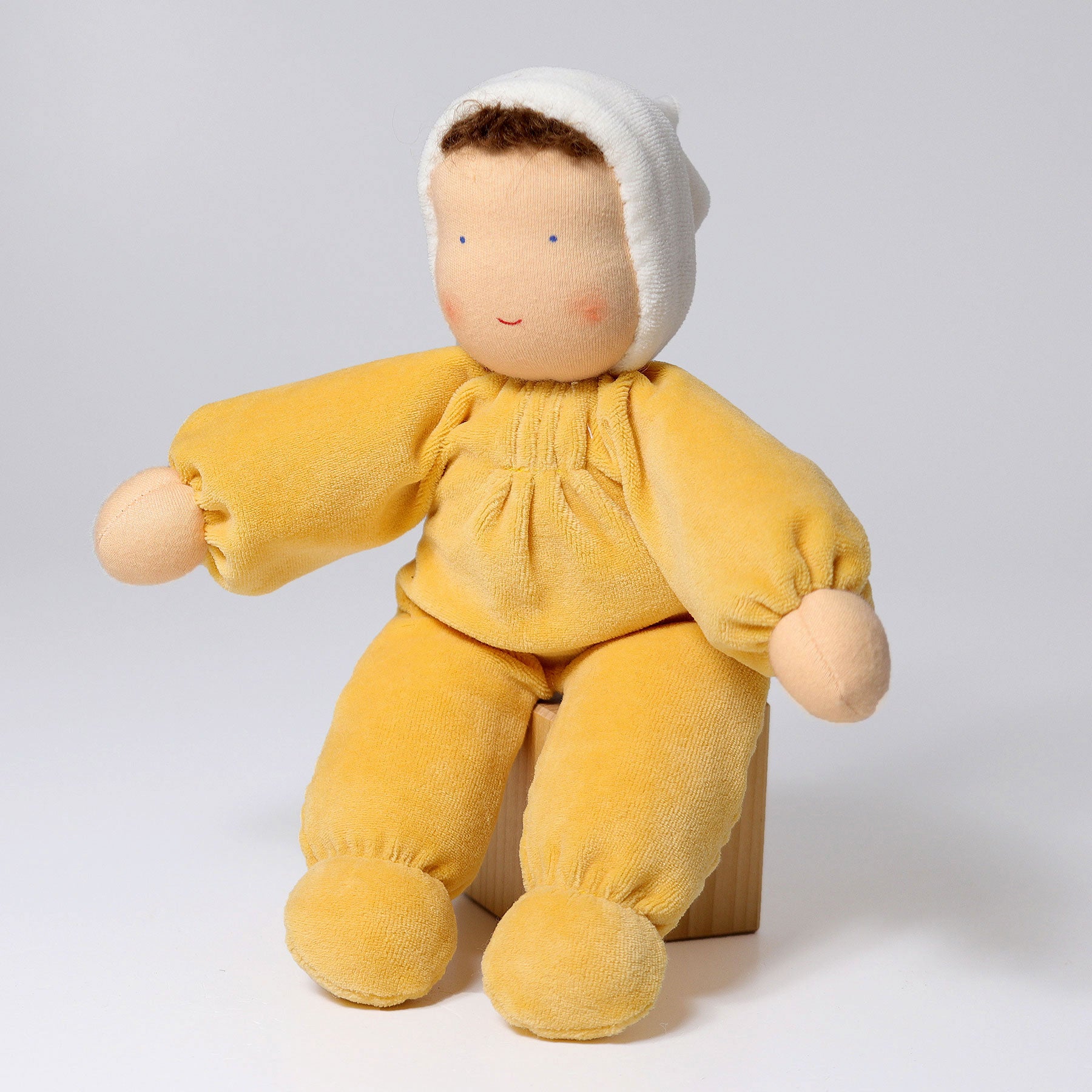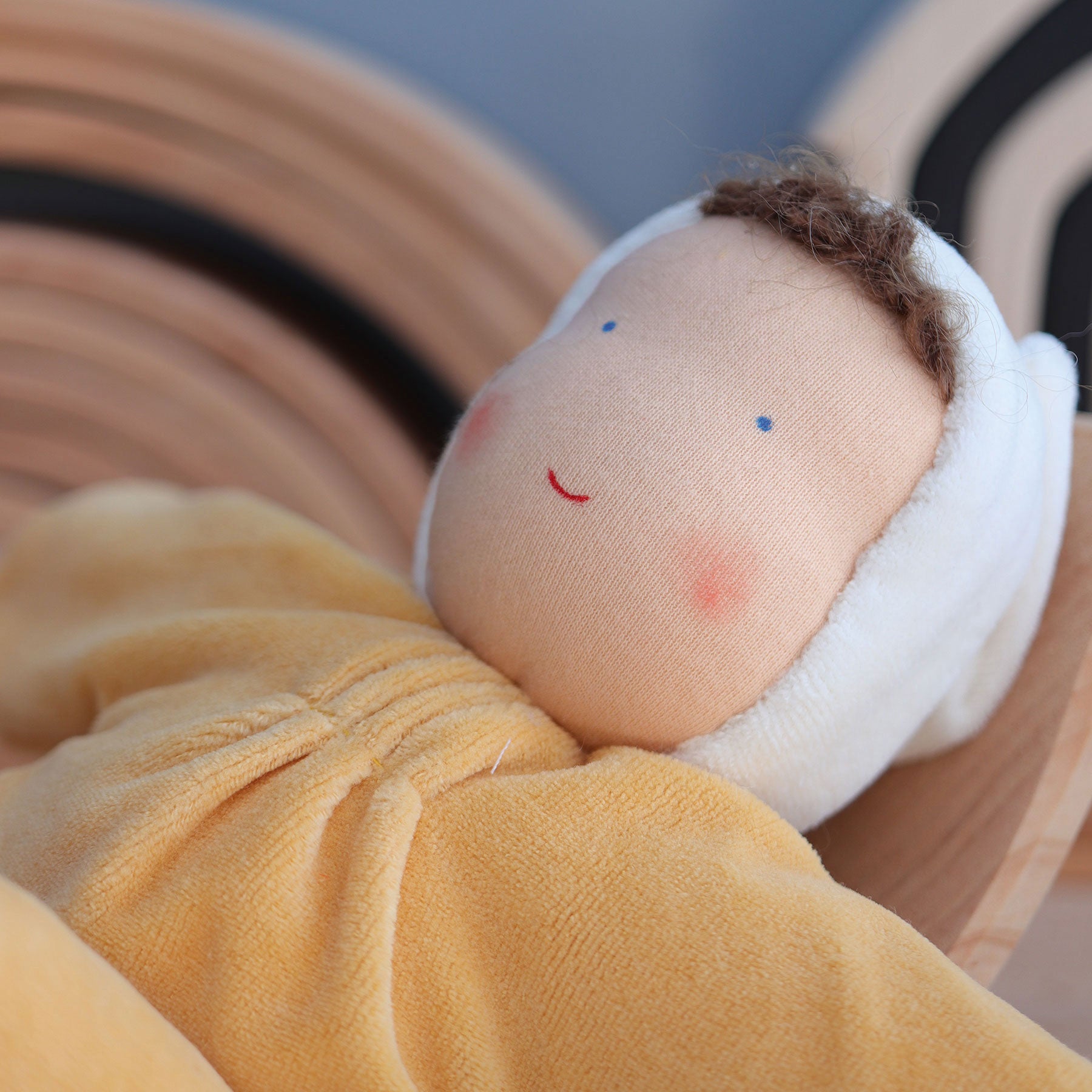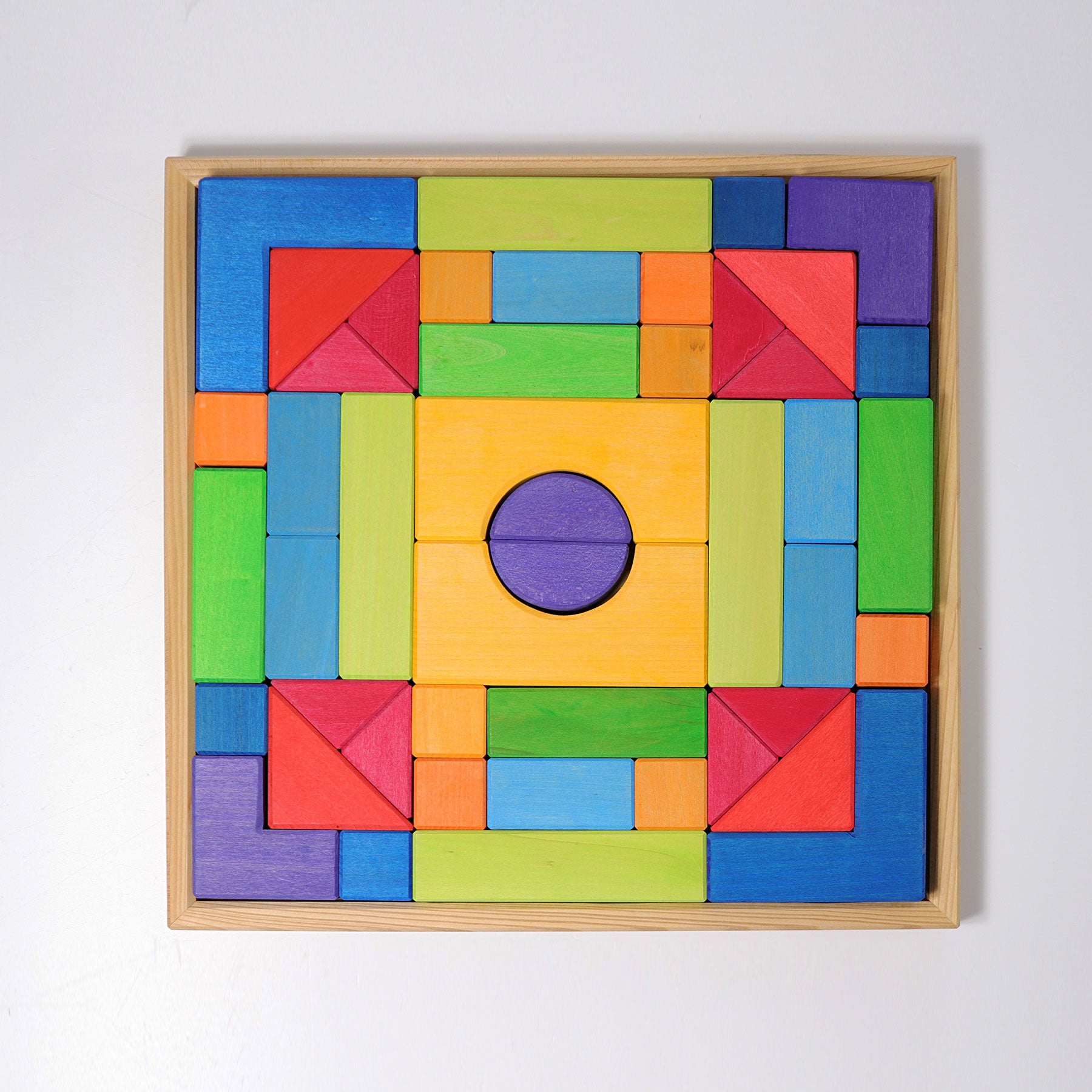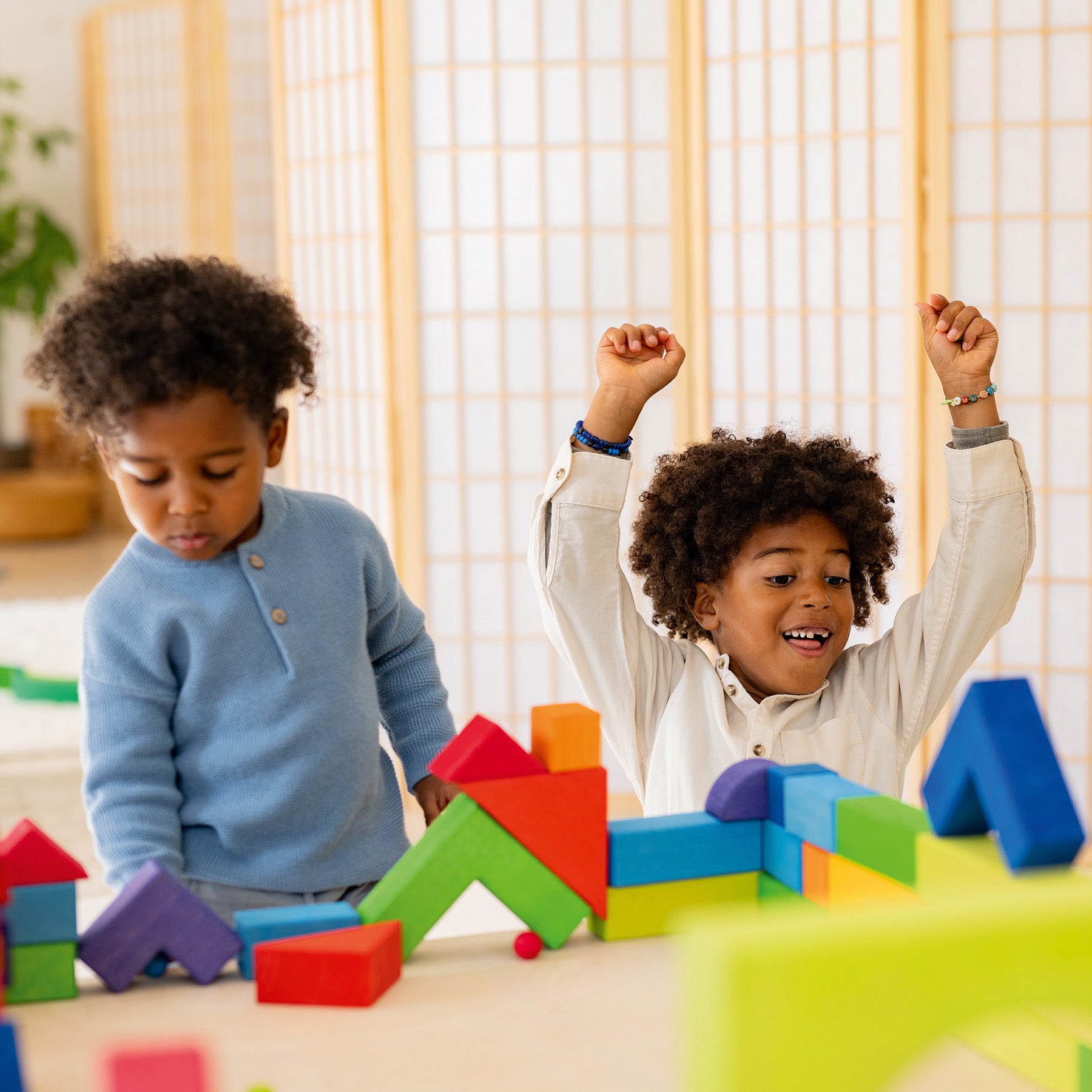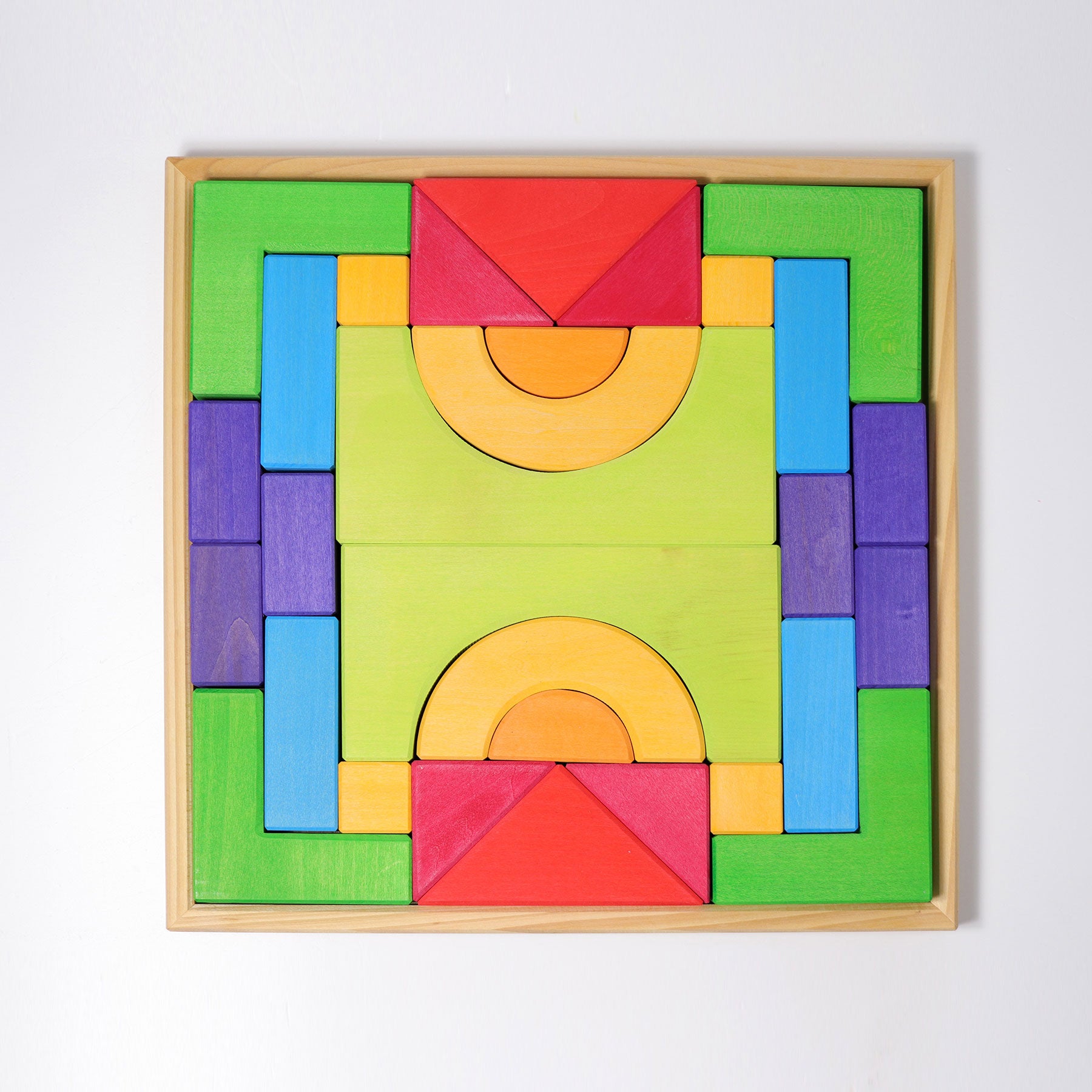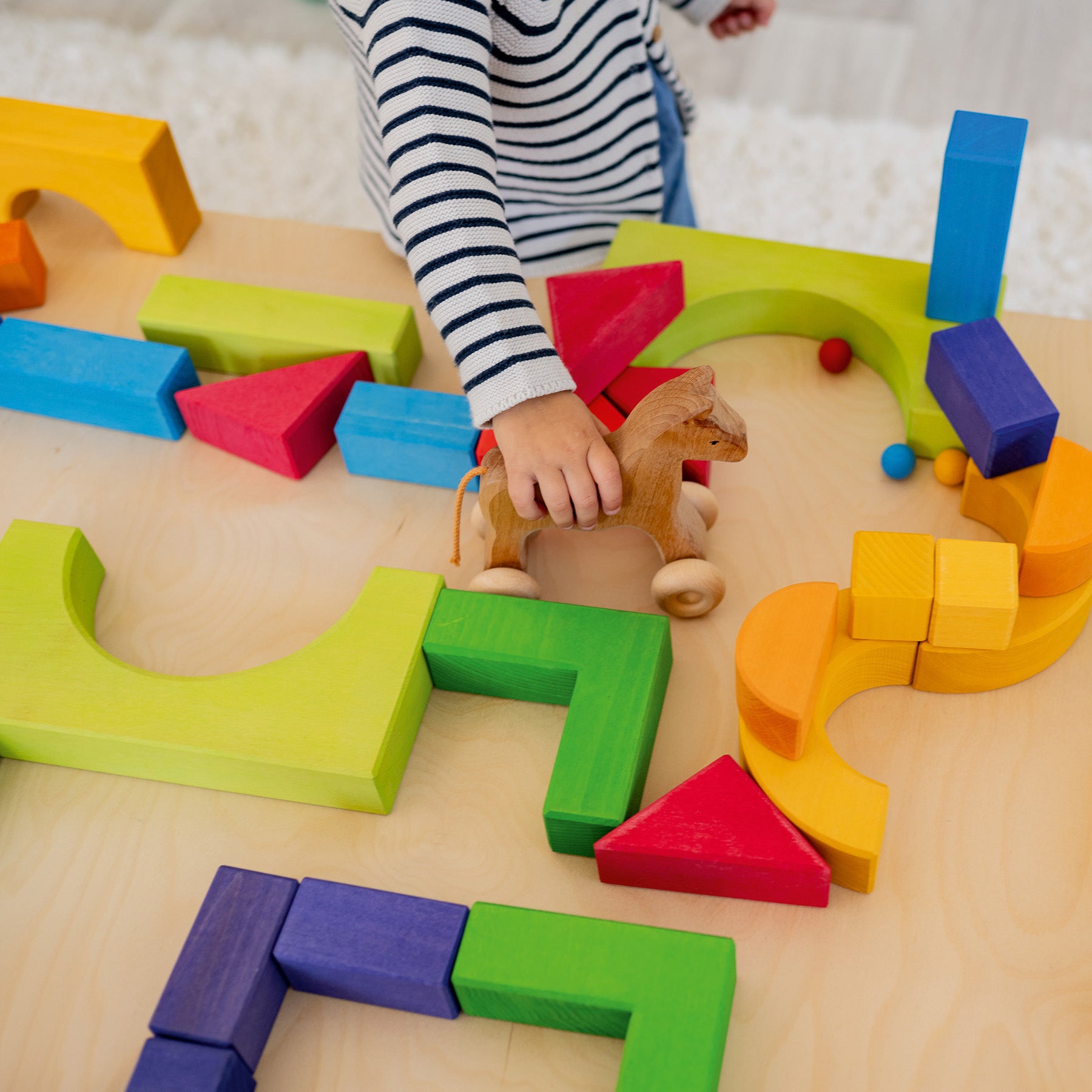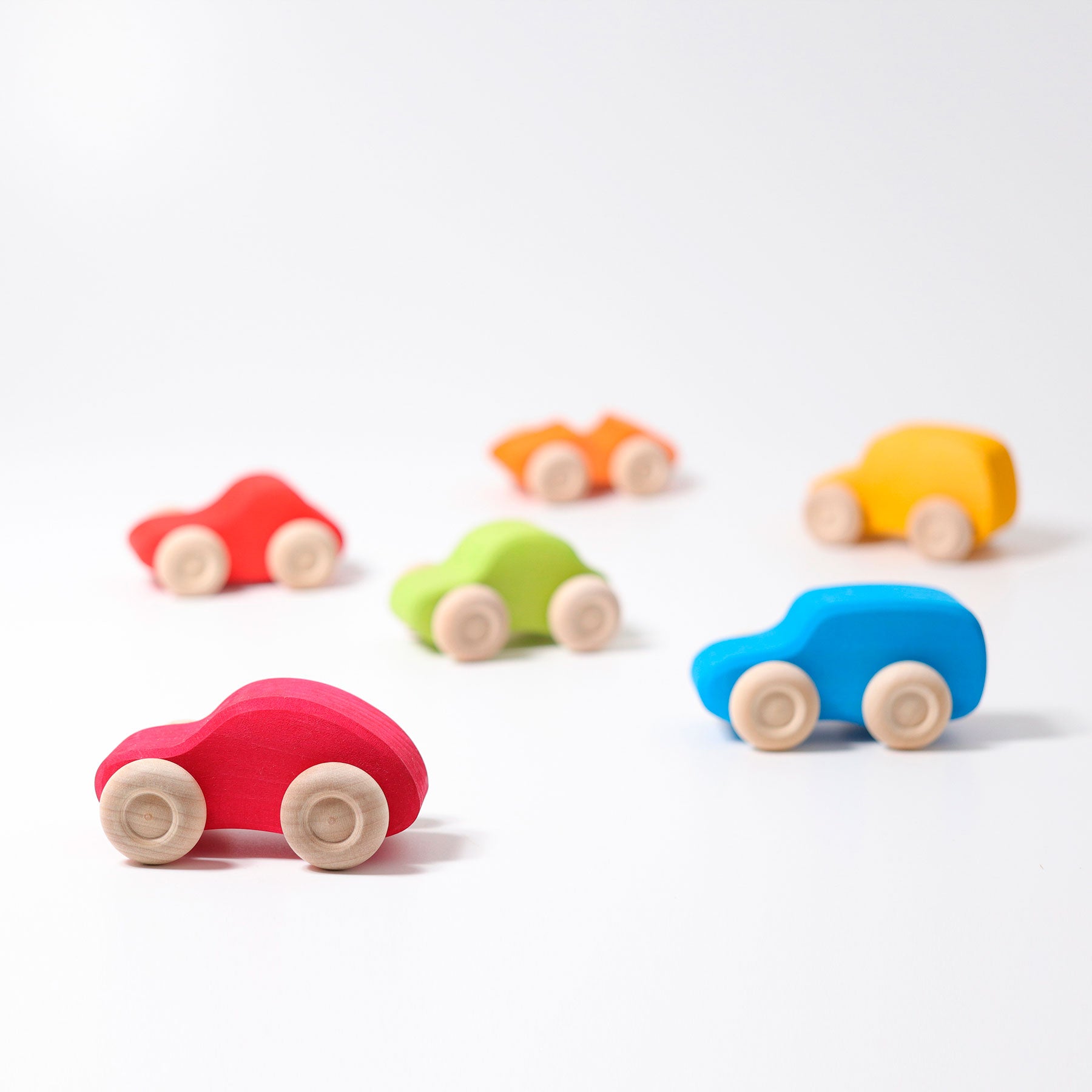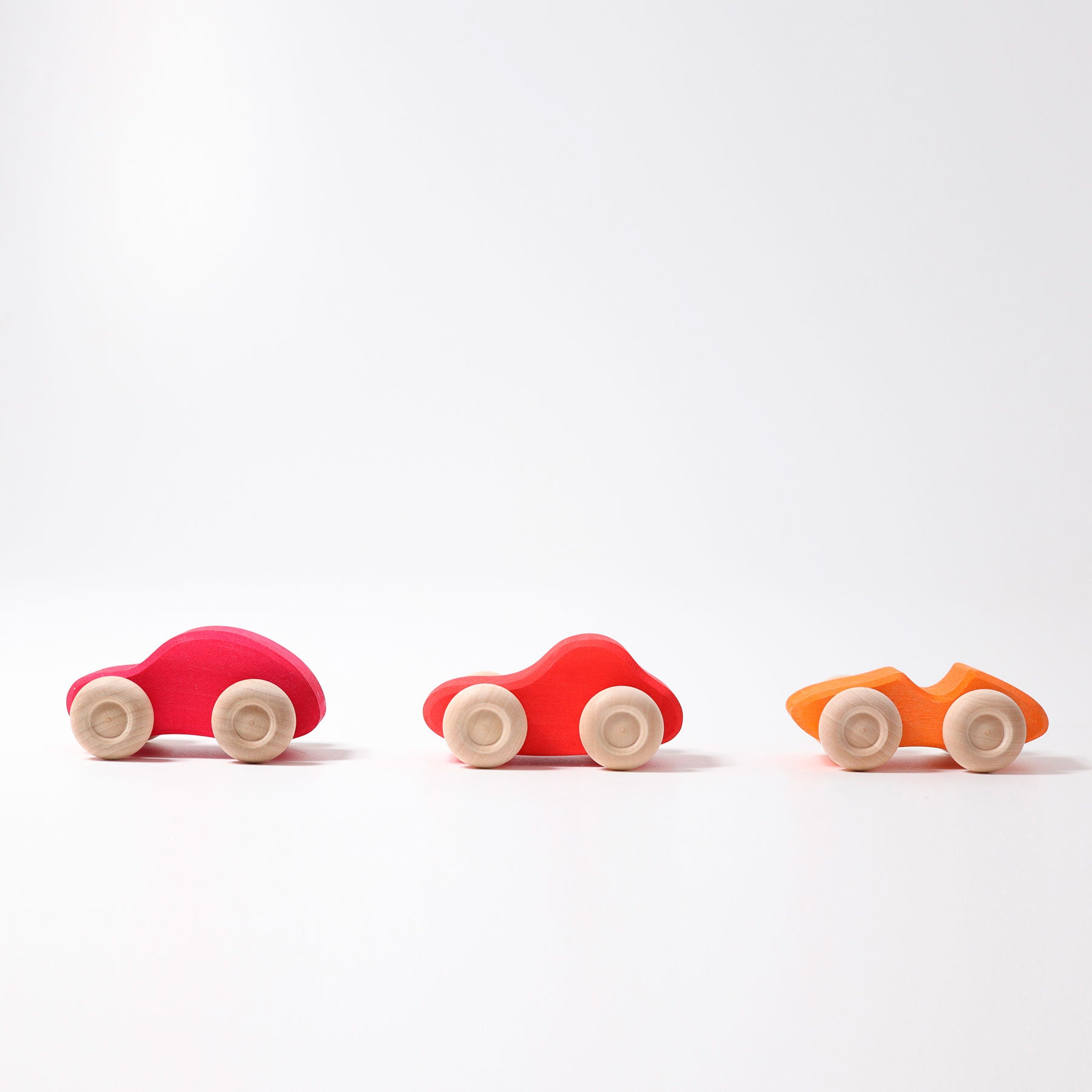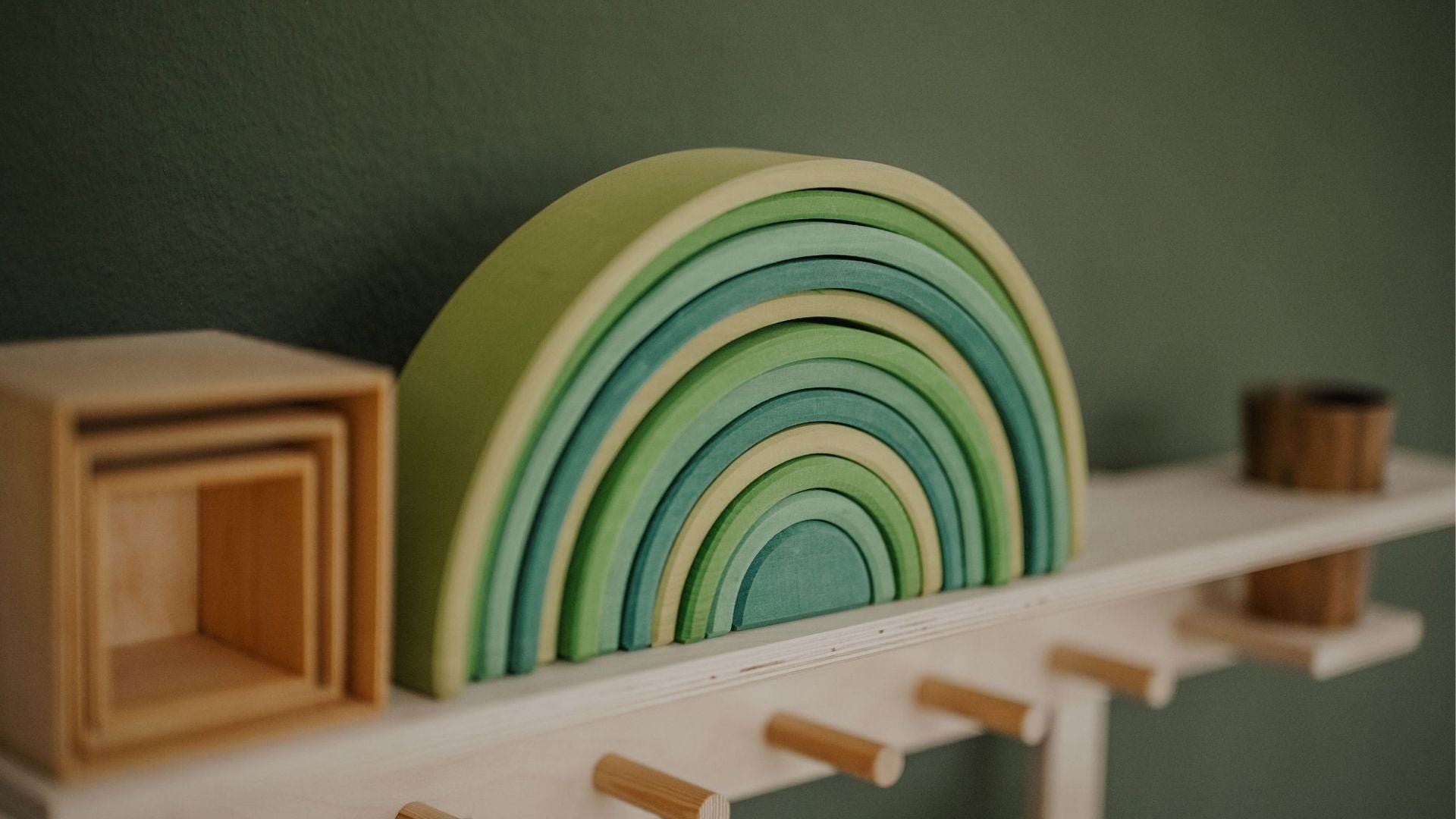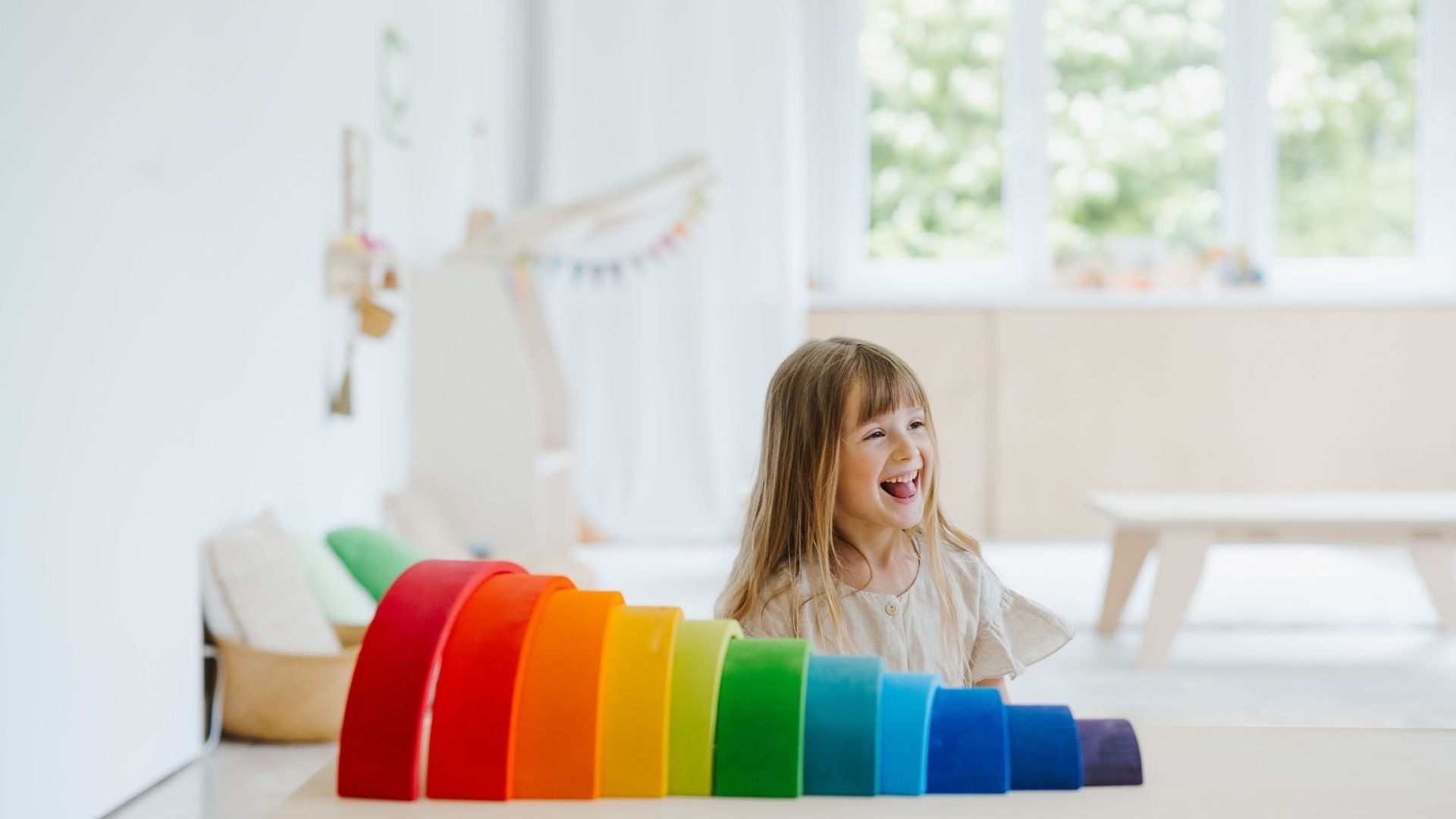A text by Simone (GRIMM'S)
GRIMM'S: Patricia, when it comes to toys, your motto is "less is more!" What's behind that?
Patricia: Too many toys impair the quality of play. When a child is confronted with too many toys, they often find it difficult to choose and start playing. That's why I advocate for fewer toys with simple materials. This also benefits language development.

GRIMM'S: What do you mean by simple materials and what does the type of toy have to do with language development?
Patricia: For me, simple play materials are building blocks or dolls. Playing with them promotes a child's imagination and symbolic skills. And studies show that parents use more and richer language when playing with simple materials, which naturally benefits the child. In contrast, when playing with complex toys, there is less talking because when the toy itself flashes and makes noises, less initiative is required.
GRIMM'S: So children can work on their language skills while playing with their parents?
Patricia: Absolutely! Through play, children understand the world and can explore themselves and the challenges of life in a relaxed atmosphere. Play is also the foundation of child therapy, because by embedding therapeutic exercises into play, the session can be designed to be child-friendly. This is especially important with younger children. The younger the child, the more playful I use speech therapy.
GRIMM'S: Can you tell us some practical examples from your everyday life as a speech therapist?
Patricia: With pleasure. For example, if a toddler is trying to form concepts and learn words, I support this with what is known as functional play. In this game, the child discovers the function of objects and tries them out again and again. For example, the child makes a car drive back and forth. In doing so, they come into contact with the words "car" and "drive". From then on, the child associates a specific action with the word "drive". They have therefore learned new words through their own experience - making the toy car drive. Later, the child will then discover that the word "drive" is also used in other situations (e.g. train, bicycle, tram) and can thus make the connection.

Role-playing is also very popular with kindergarten children. This allows children to experience what it means to put themselves in another person's shoes. They adopt different perspectives, experience emotions, and express them in words. They learn to take turns and playfully practice conversational rules: asking, waiting, and responding.
Furthermore, when planning game actions and playing through sequences of actions, skills are also practiced that can later be used to put stories or essays into a logical sequence.
All of this is fun for children and everything that is fun motivates!
GRIMM'S: So toy cars can be found in your practice. What other types of toys do you use?
Patricia: I make sure the materials I use encourage collaborative play, because: Through interaction, vocabulary, grammar, and narrative skills are practiced and developed through play. The all-purpose tool in my work is classic building blocks. Children love to get creative with blocks by stacking, knocking them over, or building. This can foster important language skills:
• The connection of actions with simple language, e.g. when knocking something over “boom, bing, oh-oh, zack kaputt!”
• Categorizing by colors, shapes and size
• learning prepositions (on, under, over, next to, behind…)
• promoting symbolic skills, e.g., when a building block is used as a telephone
GRIMM'S: Thank you very much for your time and expertise, dear Patricia!
Click here to go to Patricia's online platform Sprachgold
